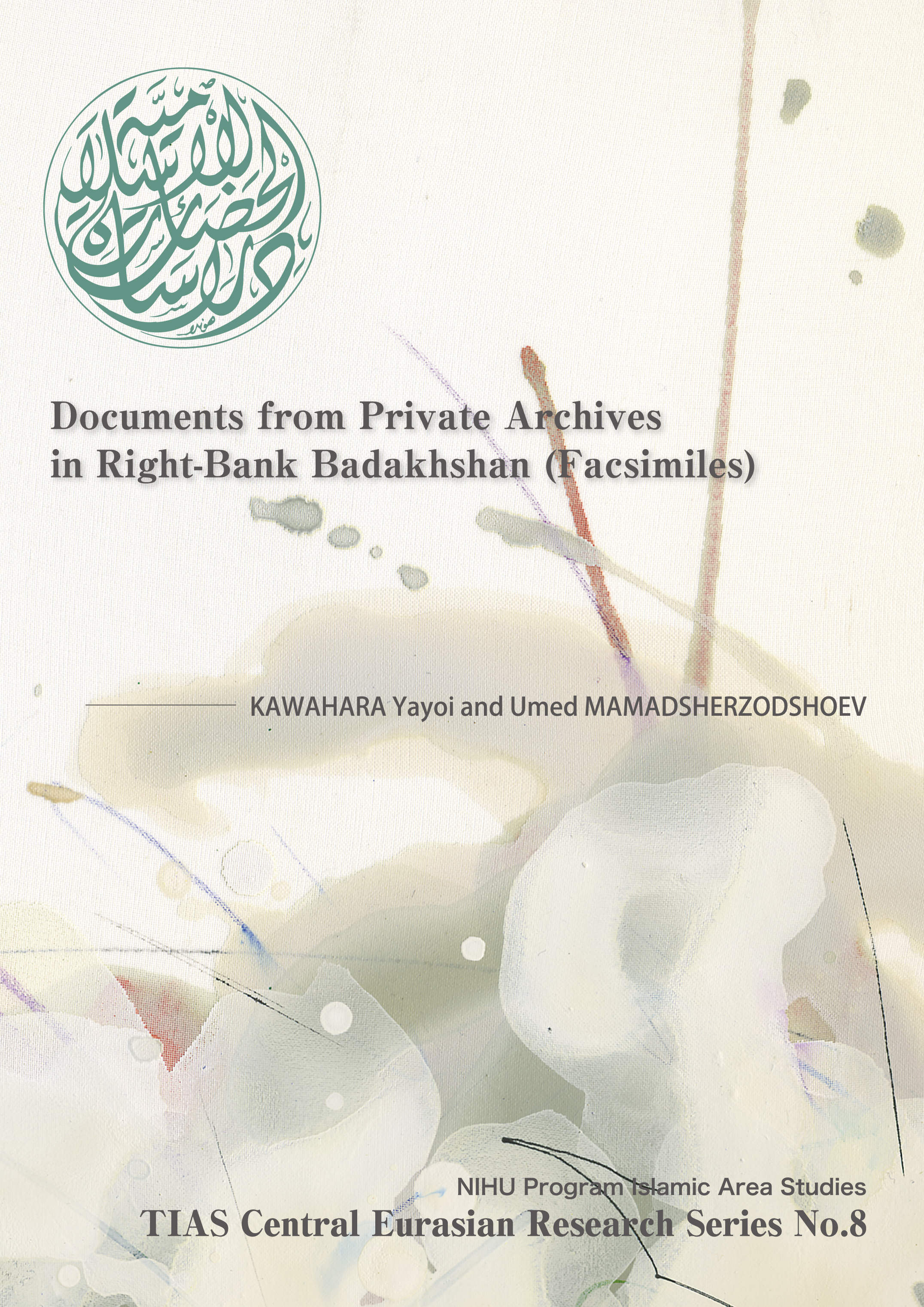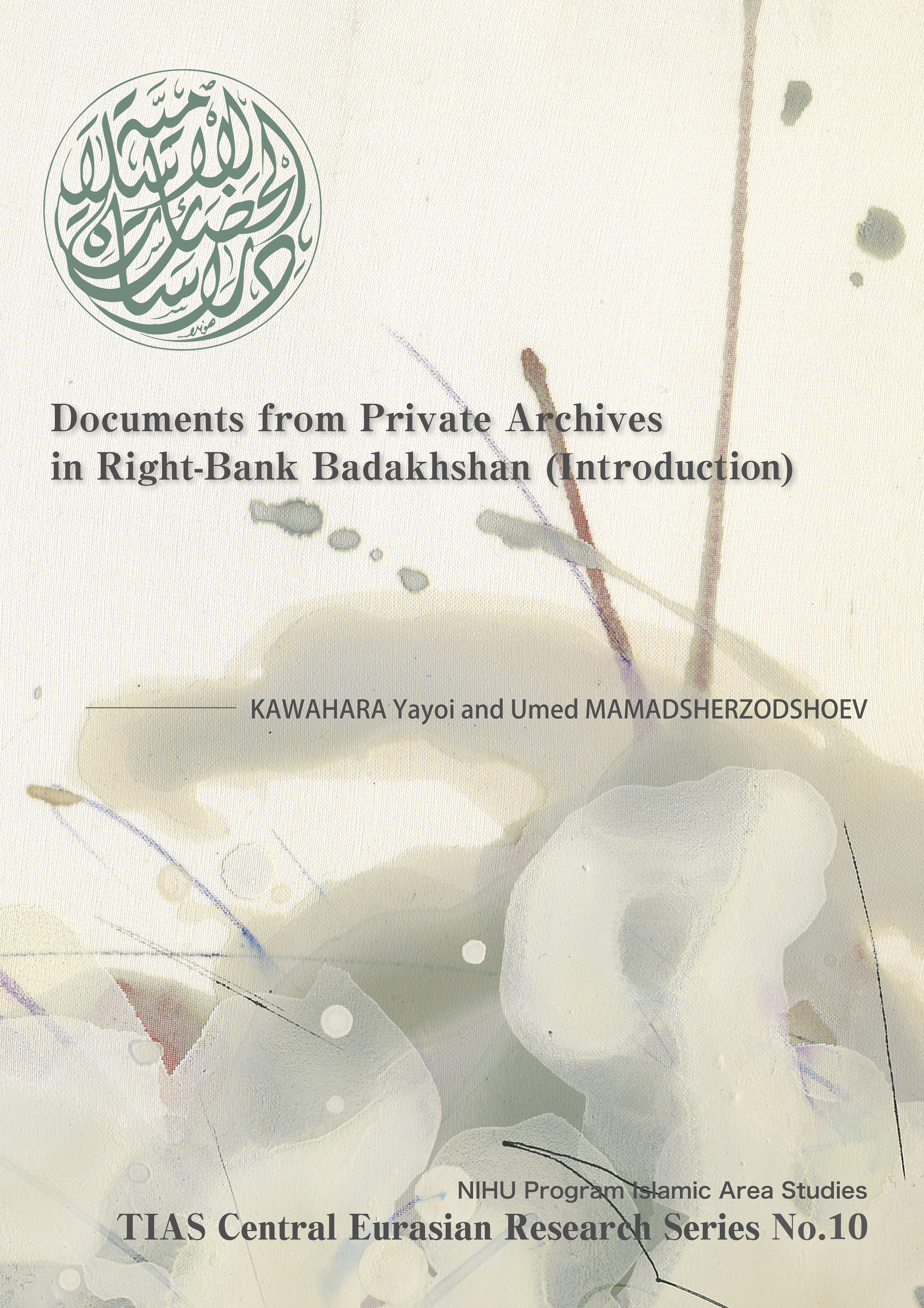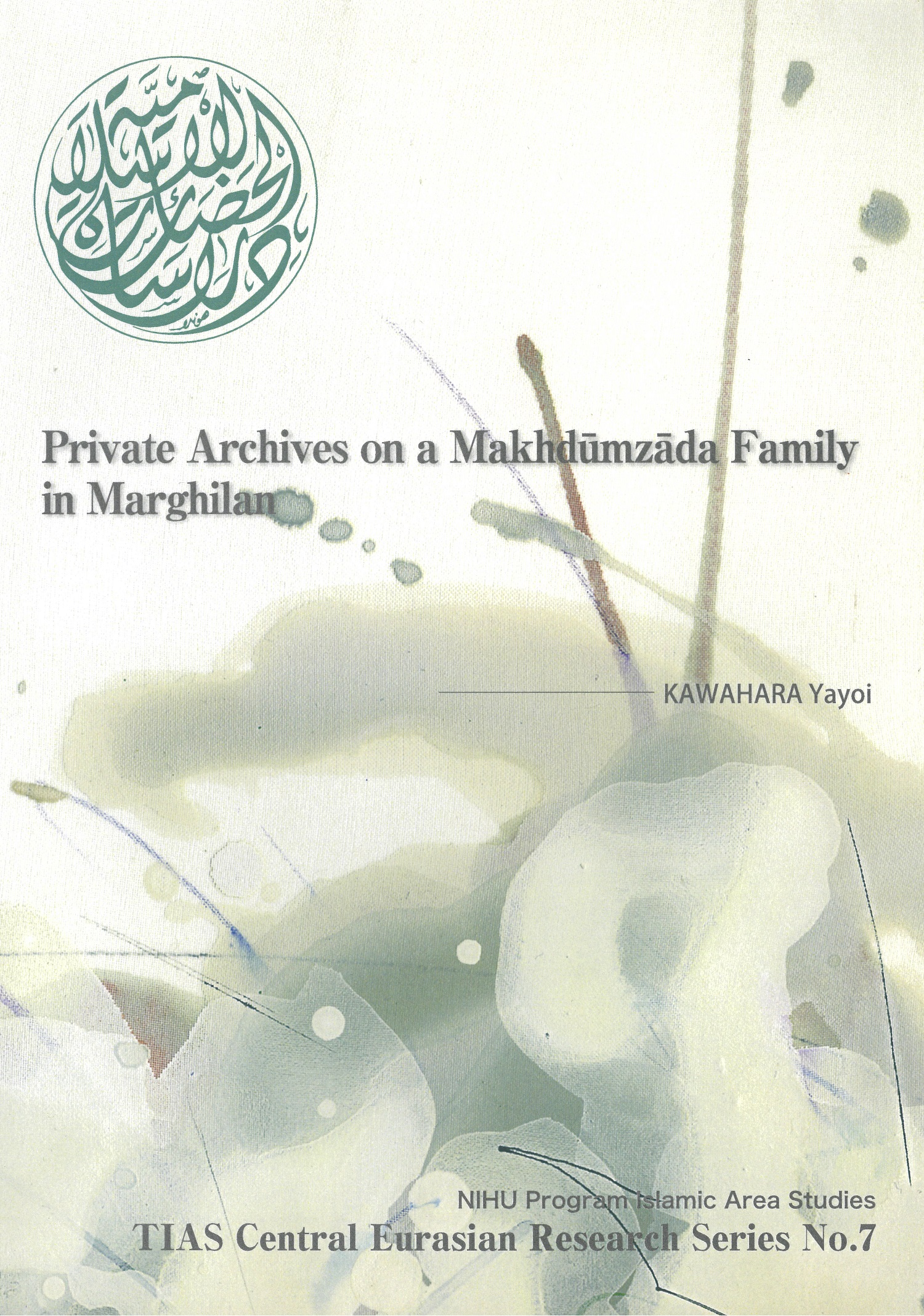
Title
TIAS Central Eurasian Research Series; no. 8 Documents from private archives in right-bank Badakhshan Facsimiles
Size
397 pages
Language
English
Released
2012
ISBN
9784904039649
Published by
TIAS: Department of Islamic Area Studies Center for Evolving Humanities, Graduate School of Humanities and Sociology, The University of Tokyo
Book Info
See Book Availability at Library
Documents from private archives in right-bank Badakhshan (Facsimiles)
Japanese Page
Valleys on both banks of the Panj river (a headstream of the Amu Darya), that forms the border between Tajikistan and Afghanistan, in both countries are populated by the Pamiri peoples. This publication presents facsimiles of privately held historical documents collected in four districts located on the right bank of the Panj river in the southwestern part of the Gorno-Badakhshan Autonomous Province of the Republic of Tajikistan.
The Pamiri peoples are the Ismaili Muslims who speak Eastern Iranian languages, such as Shughni, Wakhi, Rushani, etc., and their presence in Central Asia is a quite peculiar phenomenon, as the overwhelming majority of the population there are the Sunni Muslims and speak Turkic or Western Iranian (Tajik = Persian) languages.
It has not been abundantly clear when and how they accepted Ismaili teaching, but there is a general understanding that this came as a result of missionary activities of Nasir-i Khusraw during the Fatimid Caliphate period in the 11th century. Then, as the Ismailis were losing its influence, various factions developed, but a major turning point in the history of the Ismaili branch came in the mid-19th century when an Imam (the supreme leader) of the Qasim Shahi branch of the Nizari Ismailis was bestowed the title of ‘Aga Khan’ by the ruler of Qajar dynasty and moved to Bombay in British India where he established the base of his leadership. From then, the four successive Aga Khans began to work on modernization of the community while executing their influence over believers around the world, and the Pamiri peoples also came to follow their guidance. Such a situation continues up to today.
However, there are still many unclear points regarding beliefs and the local rule system of the Pamiris due to the lack of historical materials and insufficient research. Historical research related to this region has been long implemented by the Soviet and Tajikistan scholars, but the historical sources they could rely on were limited to only several historical treatises and stone monuments. During the Soviet times, government-led source collection research was carried out several times, but almost no follow-up studies were implemented and the collected sources were also never published.
In 2009 and 2011, the author, within the framework of a project implemented at NIHU Program Islamic Area Studies TIAS, together with a co-author, Mr. Mamadsherzodshoev, carried out field-research for the 12 collections of documents held in private possession in the Rushon, Shughnan, Rashtqala, and Ishkashim districts of the Gorno-Badakhshan Autonomous Province. This book exhibits, under the consent of the possessors, facsimiles of all 152 historical sources copied using a scanner at that time. The discovered historical materials are dated to the period from the mid-18th century to the beginning of the 20th century; most of them are in Persian, while a few of them are written in Russian and Turkic. In this publication they are classified into the following seven categories: I. Documents related to Āghā Khāns (54 items), II. Documents related to mukhīs (heads of congregations) (8 items), III. Genealogies (3 items), IV. Other documents related to religious matters (5 items), V. Orders (3 items), VI. Deeds (52 items), VII. Letters (17 items).
Historical materials of the same type have not yet been studied locally, and their publication in this volume makes it possible to directly utilize the original sources in research. It is not only the text that can be accessed, researchers can now also obtain various other information from the images as well, such as handwriting styles, Aga Khan’s seal impressions, notes in Gujarati written in Bombay, etc. Utilizing these new historical sources will allow clarification of not only various topics of Central Asian history, but also previously unknown aspects regarding the Ismaili Muslims.
*This material was published as Vol. 8 of TIAS Central Eurasian Research Series, by NIHU Program Islamic Area Studies / TIAS the Islamic Area Studies Center at the University of Tokyo (FY2011 to FY2015). As of March 2023, the preface and contents pages are available for download from the Publications list page at http://www.l.u-tokyo.ac.jp/tokyo-ias/nihu/publications/index.htm.
*Documents from private archives in right-bank Badakhshan (Introduction), which is separately introduced on this site, provides a bibliographical introduction and explanatory notes to the historical documents covered in this publication.
(Written by KAWAHARA Yayoi, Associate Professor, The University of Tokyo Library System / 2023)
Table of Contents
Facsimile
I. Documents related to Āghā Khāns
A. Decrees
B. Receipts
C. Others
II. Documents related to mukhīs
A. Orders
B. Tables on collected zakāt
C. Others
III. Genealogies
IV. Other documents related to religious matters
V. Orders
VI. Deeds
VII. Letters



 Find a book
Find a book



